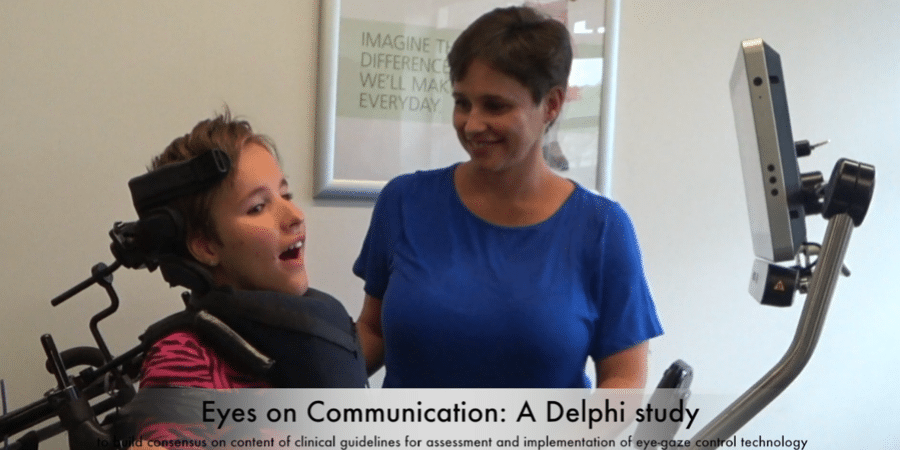
The Eyes on Communication international Research Team and Advisory Panel, which includes researchers, clinicians, people with cerebral palsy and their families, wish to share a summary of the study which led to Clinical Guidelines for eye-gaze control technology.
Eye-gaze control technology can be used by people with significant physical disability to access a speech generating device and a computer for leisure, work, communication, socialising and controlling the environment. This technology is complex to set up, needs practice to learn, and education to make sure that the technology adapts to the user’s needs. The Eyes on Communication Team wanted to develop Clinical Guidelines so that the best information was available to all people with cerebral palsy, their families and support networks around the world.
The study identified 94 statements, now included in the Clinical Guidelines. These statements are related to person factors, support networks, the environment, and technical aspects to consider during assessment, trial, funding, implementation and follow-up. Findings reinforced the importance of an individualised approach and that information gathered from the user, their support network and professionals are central when measuring outcomes.
Download free copies of the Clinical Guidelines HERE and the publication HERE
With thanks,
Dr. Petra Karlsson and the Eyes on Communication Research Team and Advisory Panel